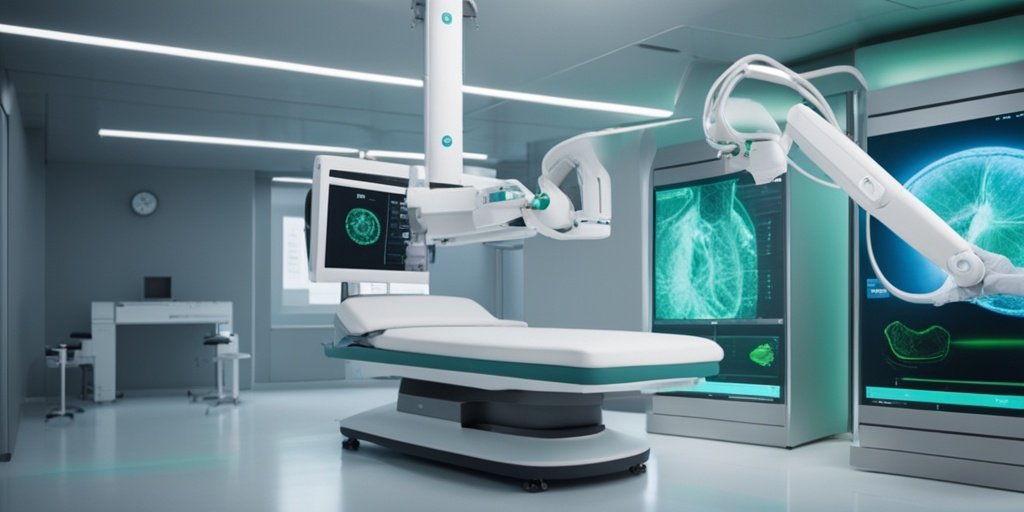⚡ Quick Summary
This review explores the role of artificial intelligence (AI) and machine learning algorithms in the diagnosis and therapy of the ankle joint, highlighting advancements in ankle joint arthroplasty. The findings suggest a growing potential for AI applications in orthopedic medicine, particularly for complex joint issues.
🔍 Key Details
- 📊 Focus: Diagnosis and therapy of the ankle joint
- ⚙️ Technologies: AI and machine learning algorithms
- 🏥 Applications: Orthopedics and radiology
- 🦴 Key Procedure: Ankle joint arthroplasty
🔑 Key Takeaways
- 🔍 AI is increasingly utilized in orthopedic diagnostics and treatment.
- 🦵 The ankle joint is complex and often requires surgical intervention.
- 🏆 Ankle joint arthroplasty is a common procedure for severe damage.
- 💡 The review discusses trends and achievements in AI applications.
- 🌐 Insights from other medical fields may enhance ankle joint treatment.
- 📈 The study emphasizes the need for further research in this area.

📚 Background
The integration of artificial intelligence in medicine has been a game-changer, particularly in fields like orthopedics and radiology. While much focus has been on major joints such as the hip and knee, the ankle joint—one of the most intricate joints in the human body—has received comparatively less attention. Given the frequency of therapeutic procedures required for ankle injuries, understanding AI’s role in this context is crucial.
🗒️ Study
This review synthesizes current knowledge on the application of AI and machine learning in diagnosing and treating ankle joint conditions. It highlights the advancements in ankle joint arthroplasty and discusses how contemporary AI solutions can be leveraged to improve patient outcomes. The authors also explore innovative ideas from other medical domains that could be adapted for ankle joint therapy.
📈 Results
The review indicates that while AI applications in ankle joint therapy are still developing, there are significant advancements in arthroplasty techniques and diagnostic processes. The authors emphasize the importance of integrating AI to enhance the precision and effectiveness of treatments, ultimately leading to better patient care.
🌍 Impact and Implications
The implications of this research are profound. By harnessing the power of AI and machine learning, healthcare professionals can potentially revolutionize the way ankle joint conditions are diagnosed and treated. This could lead to improved surgical outcomes, reduced recovery times, and enhanced quality of life for patients suffering from ankle injuries.
🔮 Conclusion
This review underscores the transformative potential of AI in orthopedic medicine, particularly concerning the ankle joint. As research continues to evolve, we can anticipate more innovative solutions that will not only improve diagnostic accuracy but also enhance therapeutic interventions. The future of ankle joint treatment looks promising with the integration of advanced technologies!
💬 Your comments
What are your thoughts on the integration of AI in orthopedic treatments? We would love to hear your insights! 💬 Share your comments below or connect with us on social media:
Artificial intelligence and machine learning algorithms in diagnosis and therapy of the ankle joint.
Abstract
The recent advancement of computational systems provides fast information exchange and the collection of large amounts of data. Growing number of those systems allow for effective processing of huge amounts of information, utilizing advanced algorithms that are called artificial intelligence (AI). AI has been used for many years, and the number of its applications is growing in various areas. Such solutions are also being developed increasingly in medicine, including orthopedics and radiology, to support the diagnostic and therapeutic processes. Progress in this area is particularly targeted at the skeletal sites that most often require intervention, such as the hip or knee area, with modest interest in the ankle joint. The ankle is one of the most complicated human joints, and therapeutic procedures for its treatment are relatively common. One of the solutions used in the event of serious ankle joint damage is arthroplasty. This review summarizes the current state of AI applications for the diagnosis and therapy of the ankle joint, focusing on trends and achievements in ankle joint arthroplasty and contemporary orthopedic AI solutions. Ideas from other fields of medical diagnostics or orthopedic surgery that may be utilized in the diagnosis and treatment of ankle joint are also discussed.
Author: [‘Gabryś PD’, ‘Pytlarz M’, ‘Koźlak M’, ‘Gądek A’, ‘Korkosz M’, ‘Liszka H’, ‘Tatoń G’]
Journal: J Sports Med Phys Fitness
Citation: Gabryś PD, et al. Artificial intelligence and machine learning algorithms in diagnosis and therapy of the ankle joint. Artificial intelligence and machine learning algorithms in diagnosis and therapy of the ankle joint. 2024; (unknown volume):(unknown pages). doi: 10.23736/S0022-4707.24.15759-3